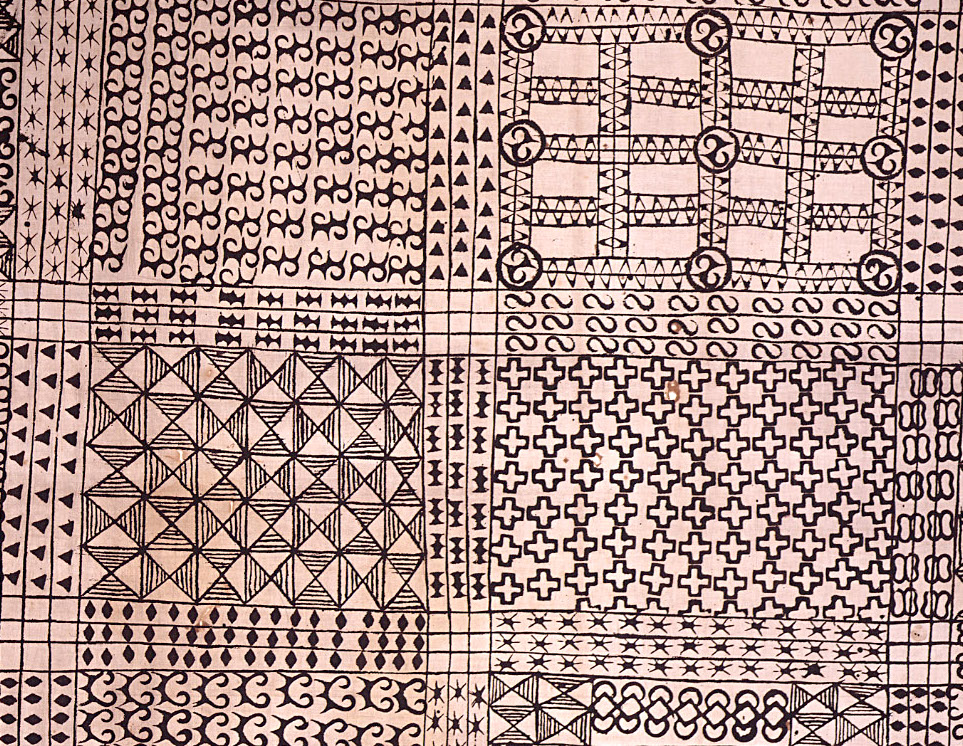Technique
Dark Adinkra aduro pigment for the stamping is made by soaking, pulverizing, and boiling the inner bark and roots of the badie tree (Bridelia ferruginea) in water over a wood fire. Once the dark colour is released, the mixture is strained, and then boiled for several more hours until it thickens. The stamps are carved out of the bottom of a calabash piece. They measure between five and eight centimetres square. They have a handle on the back, and the stamp itself is slightly curved, so that the dye can be put on with a rocking motion.
Application
Adinkra cloths were traditionally only worn by royalty and spiritual leaders for funerals and other very special occasions. They are now worn by anyone, stylishly wrapped around women or men on any special occasion. In the past they were hand printed on undyed, red, dark brown or black hand-woven cotton fabric depending on the occasion and the wearer's role; nowadays they are frequently mass-produced on brighter coloured fabrics.
Meaning & Symbols
The symbols have a decorative function but also represent objects that encapsulate evocative messages that convey traditional wisdom, aspects of life or the environment. There are many different symbols with distinct meanings, often linked with proverbs.







3 thoughts on “Adinkra”
Comments are closed.